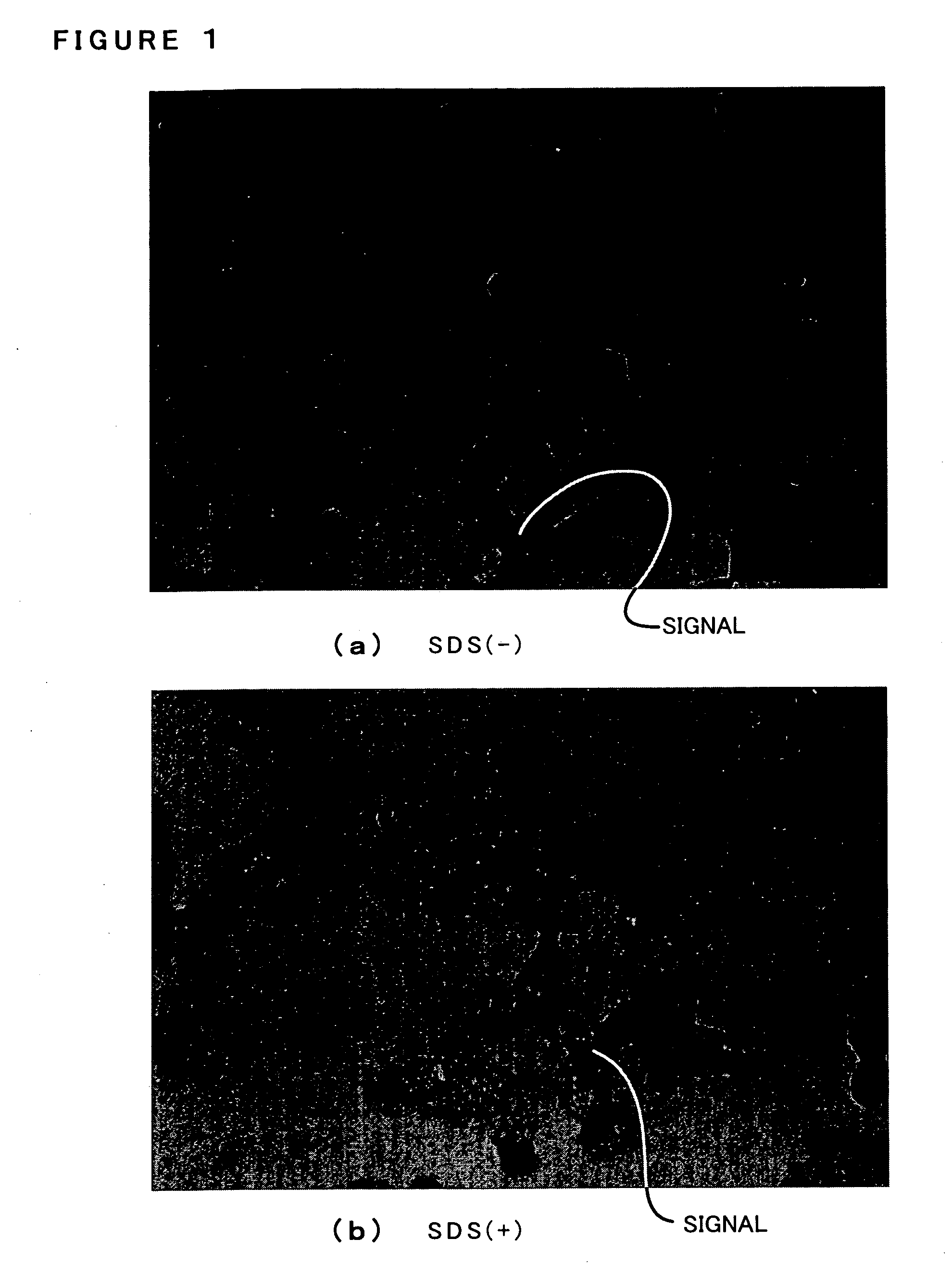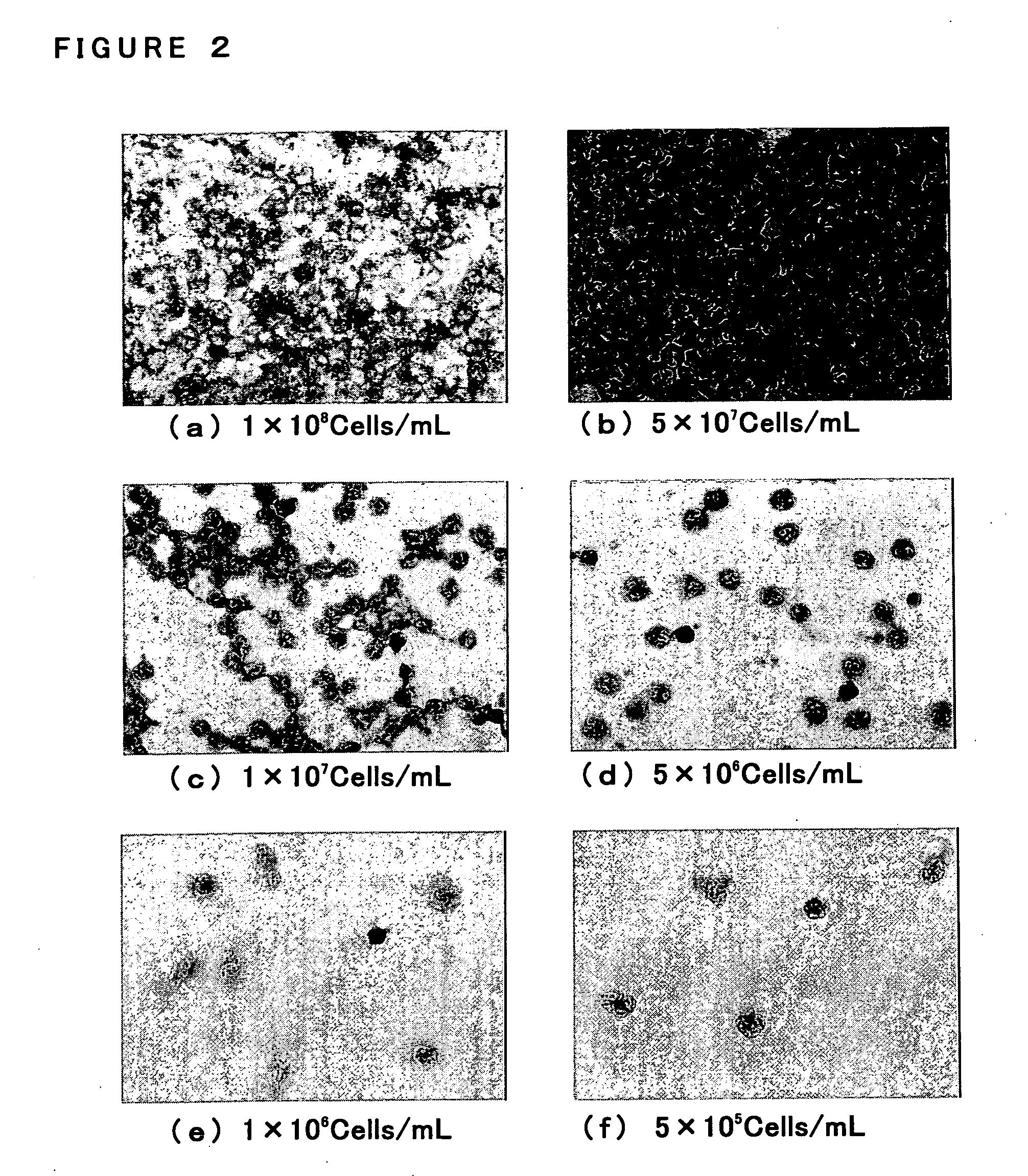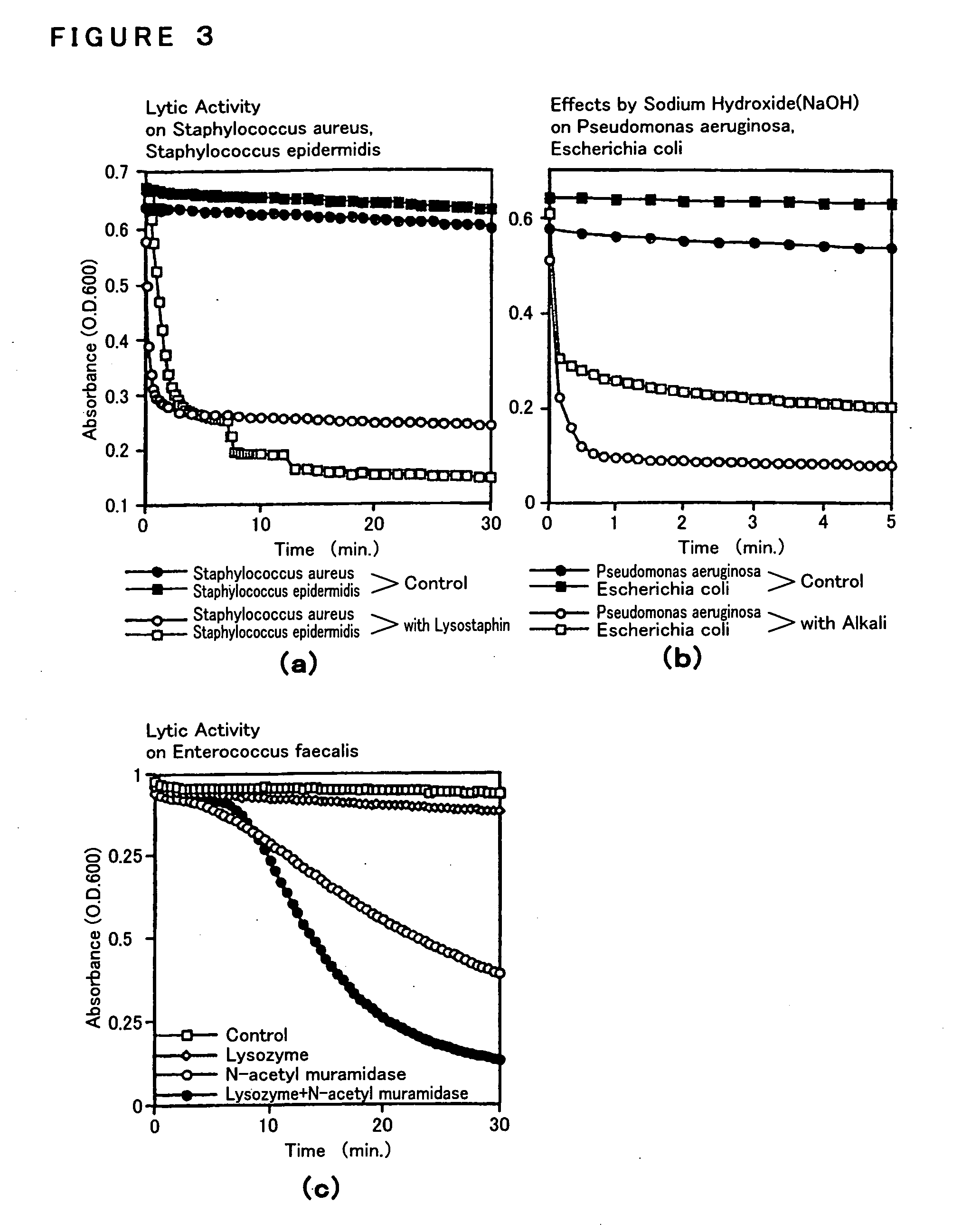Method for detecting and identifying microorganism causative of infection
a microorganism and infectious disease technology, applied in the field of infectious disease causative microorganism detection and identification, can solve the problems of not contributing well to the diagnosis of serious diseases like sepsis, and achieve the effect of improving cell membrane permeability
- Summary
- Abstract
- Description
- Claims
- Application Information
AI Technical Summary
Benefits of technology
Problems solved by technology
Method used
Image
Examples
example 1
Blooding and Preparation of Blood-Specimens
[0115] Twelve blood specimens (Specimen A-L) were obtained as a clinical specimen from the patients who are under the suspicion about sepsis. 10 ml of heparinized venous bloods were obtained from each patient and were mixed with the blood components separative reagent (adjusted with sterilized-purified water to be 25 ml as their final volume containing 225 mg of Sodium Chloride and 1.5 g of Dextran (Molecular Weight: 200,000-300,000)) in the ratio of 4:1. Leukocyte fractions (the upper layer) were then obtained by leaving them at 37° C. for 30 minutes. Leukocytes were appeared by centrifuging the leukocyte fractions in 160×g, at 4° C. and for 10 minutes. Pelletized leukocytes so obtained were suspended with 1 ml of sterilized-purified water and the suspension were immdeditely put into an isotonic state by adding thereto excessive amounts of PBS (prepared by diluting twenty-fold with sterilized-purified water the PBS Raw Solution which have...
example 2
Fixation of Leukocytes
[0116] APS coated slides were employed wherein they were made by coating 3-aminopropyltriethoxysilane (APS, SIGMA) onto the slides (JAPAN AR BROWN CO., LTD., PRODUCTS ID. S311BL). Namely, such APS coated slides were produced by putting the slides (PRODUCTS ID. S311BL) into holders, immersing them into a diluted neutral detergent to wash the same, removing the detergent well therefrom with tap water then with purified water, leaving them under the higher temperature (100° C. or more) to dry the slides, and leaving the same under the room temperature to cool the slides. After then, these slides were immersed in Acetone containing 2% APS for one minute and were immediately rinsed gently with Acetone then with sterilized-purified water. These slides were then air-dried. Such performance was repeated and includes the immersion of these slides in Acetone containing 2% APS for one minute, immediate gentle rinse of the slides with Acetone and sterilized-purified water...
example 3
Treatment to Improve Permeability of Leukocyte Cell Membrane
[0118] They were immersed in PBS for 10 minutes, then in the solution prepared by diluting ten-fold a pretreatment reagent (prepared by mixing 1.25 g of Saponin, 1.25 ml t-octylphenoxy-polyethoxyethanol (specific gravity of 1.068-1.075 (20 / 4%), pH (5 w / v %) 5.5-7.5) and 25 ml PBS Raw Solution, and adjusting With sterilized-purified water to be 50 ml as their final volume), and were applied to a centrifuge for 10 minutes to accelerate thier permeability.
PUM
| Property | Measurement | Unit |
|---|---|---|
| concentration | aaaaa | aaaaa |
| temperature | aaaaa | aaaaa |
| temperature | aaaaa | aaaaa |
Abstract
Description
Claims
Application Information
 Login to View More
Login to View More - R&D
- Intellectual Property
- Life Sciences
- Materials
- Tech Scout
- Unparalleled Data Quality
- Higher Quality Content
- 60% Fewer Hallucinations
Browse by: Latest US Patents, China's latest patents, Technical Efficacy Thesaurus, Application Domain, Technology Topic, Popular Technical Reports.
© 2025 PatSnap. All rights reserved.Legal|Privacy policy|Modern Slavery Act Transparency Statement|Sitemap|About US| Contact US: help@patsnap.com



